In the sprawling labyrinth of content creation, the role of Artificial Intelligence (AI) has begun to gain significant ground. With platforms like ChatGPT, we witness a remarkable shift in how we write long-form content. However, to truly use the potential of this promising technology, we must understand its intricate workings. As a seasoned content creator and a proud advocate of AI, I am eager to guide you through the fundamental principles and best practices of AI article writing described in this ChatGPT Cheat Sheet. You’ll discover how to prompt AI effectively, why detailed briefings are critical, and how to adopt the innovative CyborgMethod™ for top-tier content production.
So sit back, gear up, and let’s delve deep into the fascinating world of AI-powered content writing!
AI Article Writing with ChatGPT – CHEAT SHEET
How to write long-form AI content to attract readers and rank on Google?
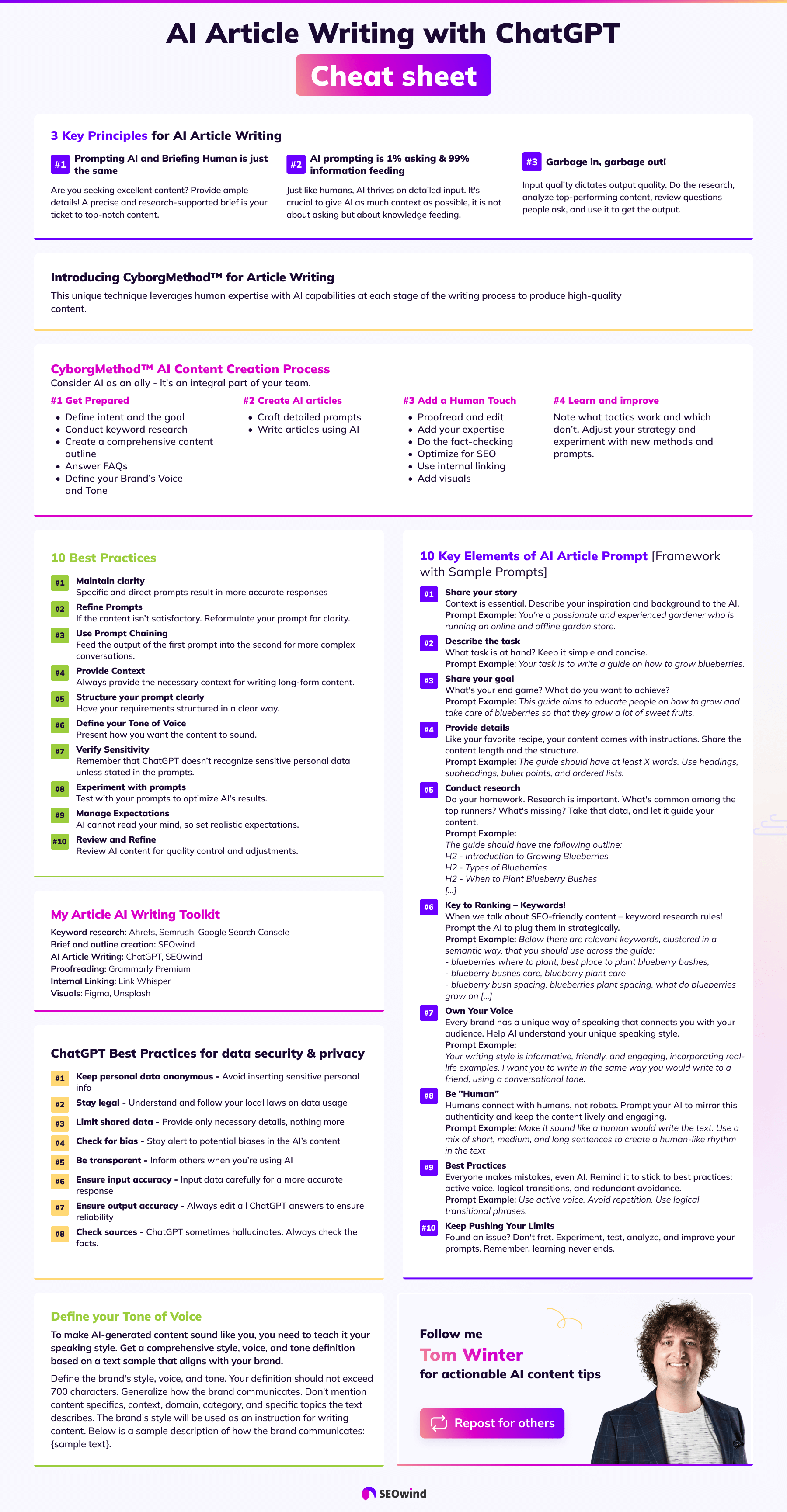
3 Key Principles for AI Article Writing
Prompting AI and Briefing Human is just the same
Are you seeking excellent content? Provide ample details! A precise and research-supported brief is your ticket to top-notch content.
AI prompting is 1% asking & 99% information feeding
Just like humans, AI thrives on detailed input. It’s crucial to give AI as much context as possible, it is not about asking but about knowledge feeding.
Garbage in, garbage out!
Input quality dictates output quality. Do the research, analyze top-performing content, review questions people ask, and use it to get the output.
Introducing CyborgMethod™ for Article Writing
This unique technique leverages human expertise with AI capabilities at each stage of the writing process to produce high-quality content.
CyborgMethod™ AI Content Creation Process
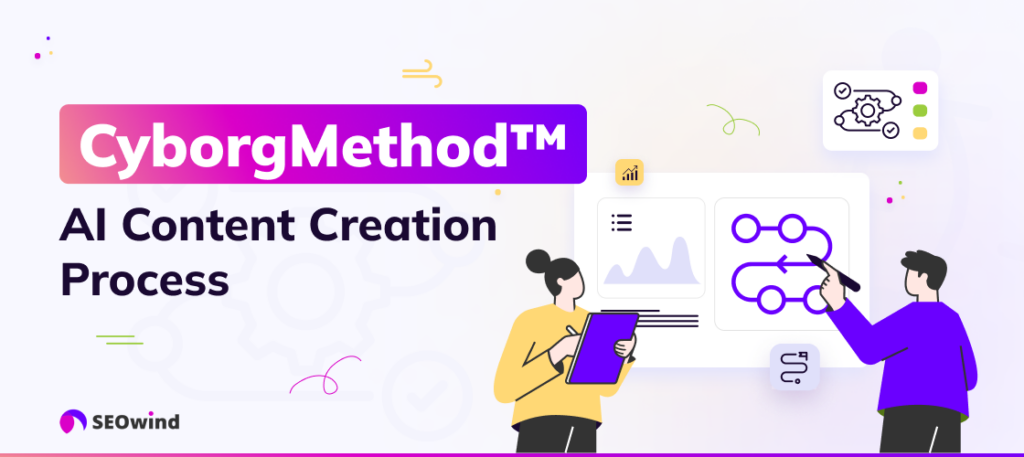
Consider AI as an ally – it’s an integral part of your team.
Step 1: Get Prepared
- Define intent and the goal
- Conduct keyword research
- Create a comprehensive content outline
- Answer FAQs
- Define your Brand’s Voice and Tone
Step 2: Create AI articles
- Craft detailed prompts
- Write articles using AI
Step 3: Add a Human Touch
- Proofread and edit
- Add your expertise
- Do the fact-checking
- Optimize for SEO
- Use internal linking
- Add visuals
Step 4: Learn and improve
Note what tactics work and which don’t. Adjust your strategy and experiment with new methods and prompts.
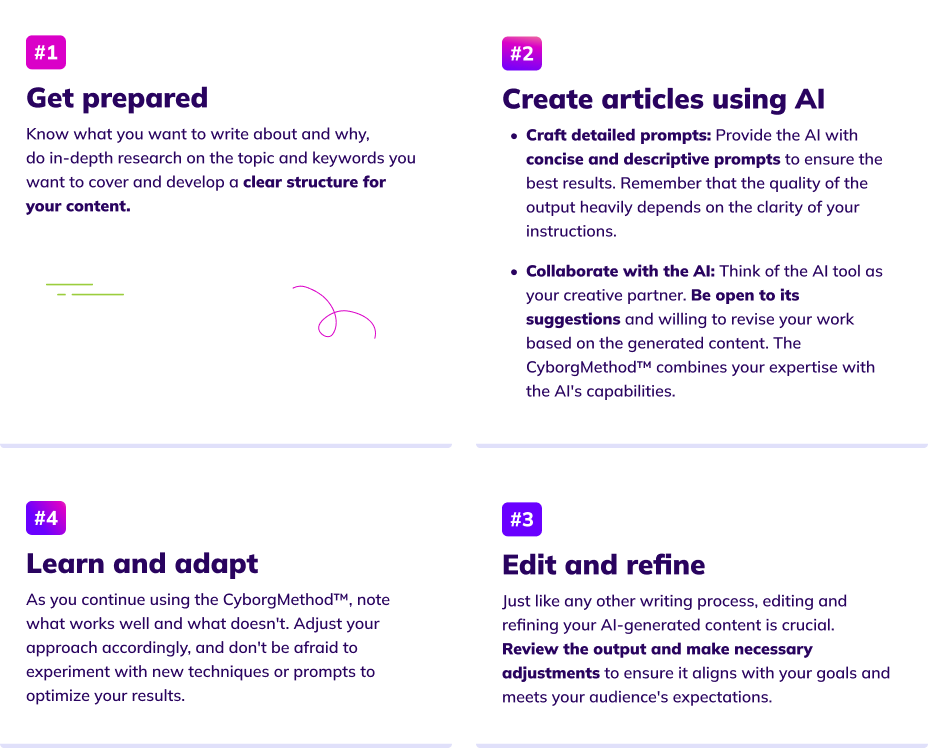
10 Best Practices for AI Article Writing
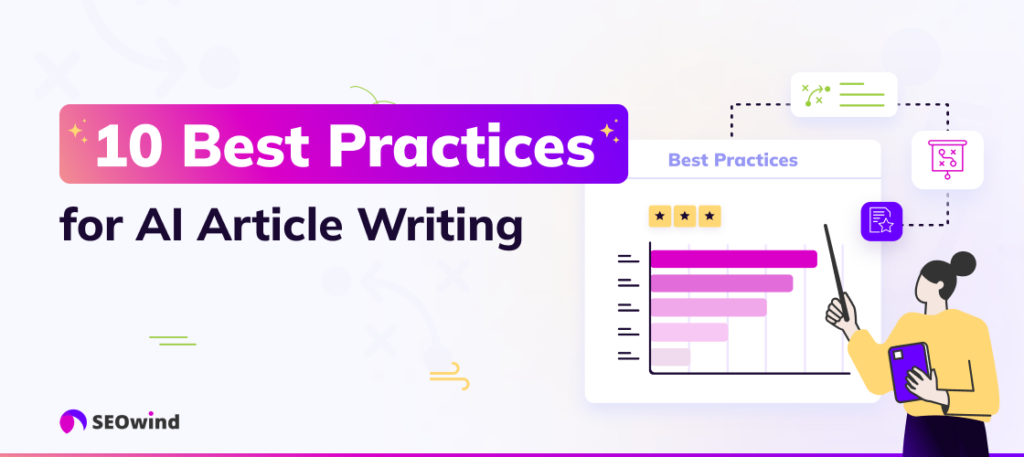
- Maintain clarity: Specific and direct prompts result in more accurate responses.
- Refine Prompts: If the content isn’t satisfactory. Reformulate your prompt for clarity.
- Use Prompt Chaining: Feed the output of the first prompt into the second for more complex conversations.
- Provide Context: Always provide the necessary context for writing long-form content.
- Structure your prompt clearly: Have your requirements structured clearly.
- Define your Tone of Voice: Present how you want the content to sound.
- Verify Sensitivity: ChatGPT doesn’t recognize sensitive personal data unless stated in the prompts.
- Experiment with prompts: Test with your prompts to optimize AI’s results.
- Manage Expectations: AI cannot read your mind, so set realistic expectations.
- Review and Refine: Review AI content for quality control and adjustments.
What NOT to do when writing an AI article with ChatGPT
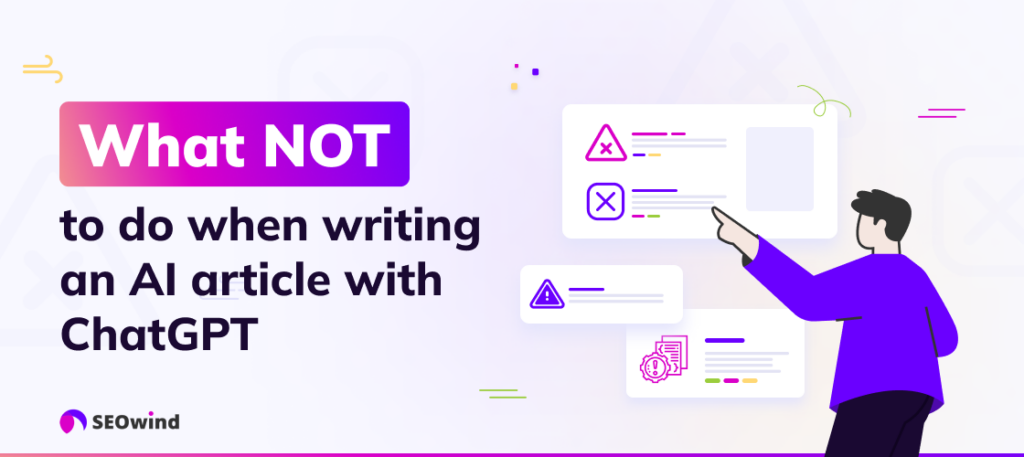
- Don’t give too many instructions in one prompt.
- Don’t give up if the first response to a prompt is bad.
- Don’t rely solely on the pre-trained knowledge base.
- Don’t use 1-line prompts to get complex results.
- Don’t forget to review and edit the generated content before finalizing
10 Key Elements of AI Article Prompt [Framework with Sample Prompts]
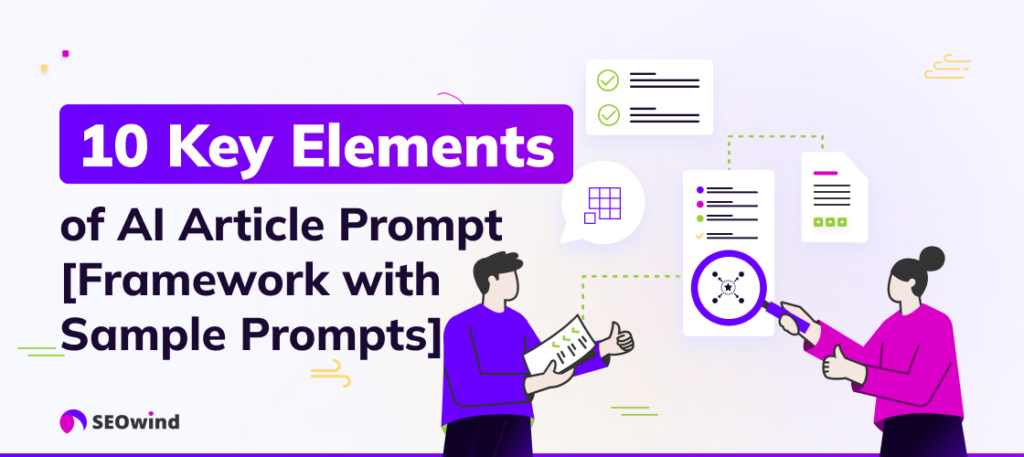
1. Share your story
Context is essential. Describe your inspiration and background to the AI.
Prompt Example:
You’re a passionate and experienced gardener running an online and offline garden store.
2. Describe the task
What task is at hand? Keep it simple and concise.
Prompt Example:
Your task is to write a guide on how to grow blueberries.
3. Share your goal
What’s your end game? What do you want to achieve?
Prompt Example:
This guide aims to educate people on how to grow and take care of blueberries so that they grow many sweet fruits.
4. Provide details
Like your favorite recipe, your content comes with instructions. Share the content length and the structure.
Prompt Example: The guide should have at least {X} words. Use headings, subheadings, bullet points, and ordered lists.
5. Conduct research
Do your homework. Research is important. What’s common among the top runners? What’s missing? Take that data, and let it guide your content.
Prompt Example:
The guide should have the following outline:
H2 – Introduction to Growing Blueberries
H2 – Types of Blueberries
H2 – When to Plant Blueberry Bushes
[…]6. Key to Ranking – Keywords!
When we talk about SEO-friendly content – keyword research rules! Prompt the AI to plug them in strategically.
Prompt Example:
Below there are relevant keywords, clustered semantically, that you should use across the guide:
– blueberries where to plant, best place to plant blueberry bushes,
– blueberry bushes care, blueberry plant care
– blueberry bush spacing, blueberries plant spacing, what do blueberries grow on […]
7. Own Your Voice
Every brand has a unique way of speaking that connects you with your audience. Help AI understand your unique speaking style.
Prompt Example:
Your writing style is informative, friendly, and engaging, incorporating real-life examples. I want you to write like you would write to a friend, using a conversational tone.
8. Be “Human”
Humans connect with humans, not robots. Prompt your AI to mirror this authenticity and keep the content lively and engaging.
Prompt Example:
Make it sound like a human would write the text. Use a mix of short, medium, and long sentences to create a human-like rhythm in the text
9. Best Practices
Everyone makes mistakes, even AI. Remind it to stick to best practices: active voice, logical transitions, and redundant avoidance.
Prompt Example:
Use active voice. Avoid repetition. Use logical transitional phrases.
10. Keep Pushing Your Limits
Found an issue? Don’t fret. Experiment, test, analyze, and improve your prompts. Remember, learning never ends.
Define your Tone of Voice with ChatGPT
To make AI-generated content sound like you, you need to teach it your speaking style. Get a comprehensive style, voice, and tone definition based on a text sample that aligns with your brand.
Define the brand’s style, voice, and tone. Your definition should not exceed 700 characters. Generalize how the brand communicates. Don’t mention content specifics, context, domain, category, and specific topics the text describes. The brand’s style will be used as an instruction for writing content. Below is a sample description of how the brand communicates: {sample text}.
ChatGPT Best Practices for data security and privacy
- Keep personal data anonymous – Avoid inserting sensitive personal info.
- Stay legal – Understand and follow your local laws on data usage.
- Limit shared data – Provide only necessary details, nothing more.
- Check for bias – Stay alert to potential AI content biases.
- Be transparent – Inform others when you’re using AI.
- Ensure input accuracy – Input data carefully for a more accurate response.
- Ensure output accuracy – Always edit all ChatGPT answers to ensure reliability.
- Check sources – ChatGPT sometimes hallucinates. Always check the facts.
My Article AI Writing Toolkit

- Keyword research: Ahrefs, Semrush, Google Search Console
- Brief and outline creation: SEOwind
- AI Article Writing: ChatGPT, SEOwind
- Proofreading: Grammarly Premium
- Internal Linking: Link Whisper
- Visuals: Figma, Unsplash


